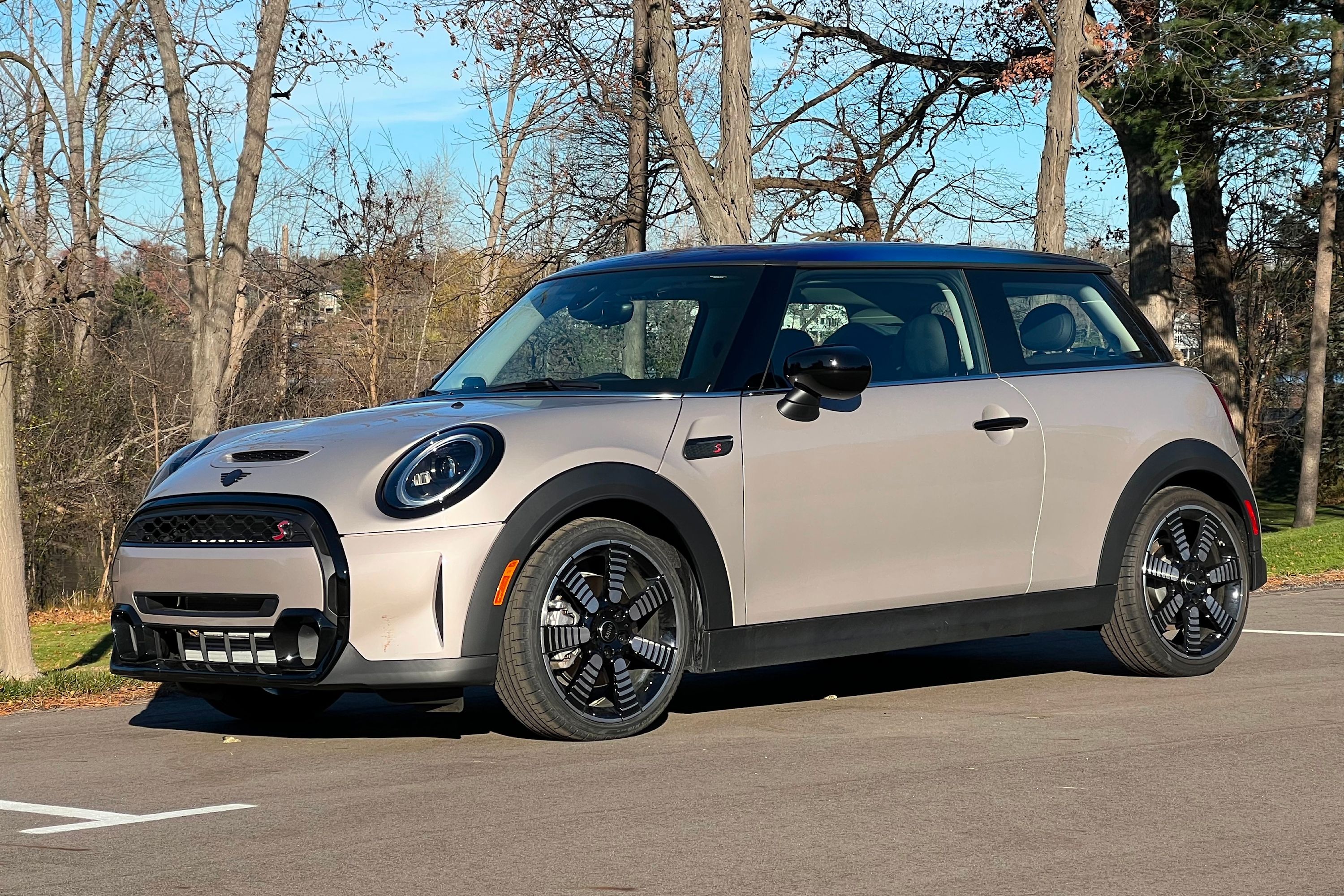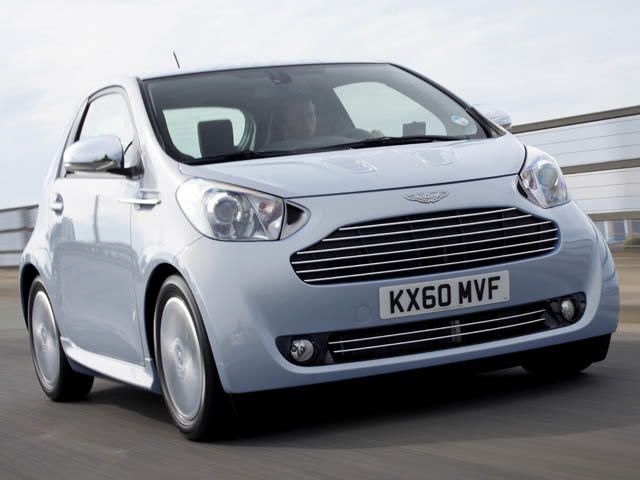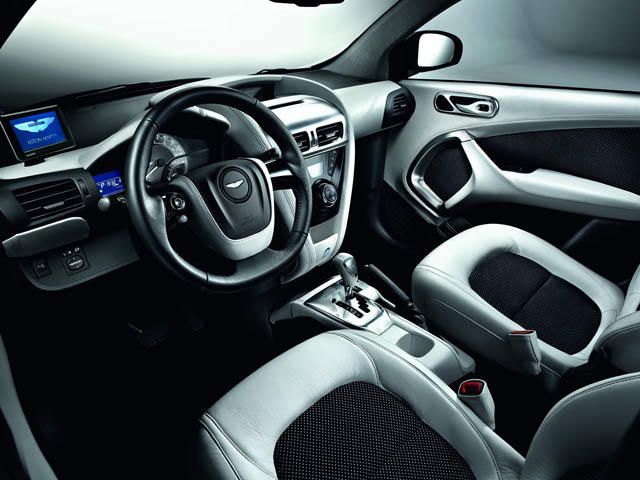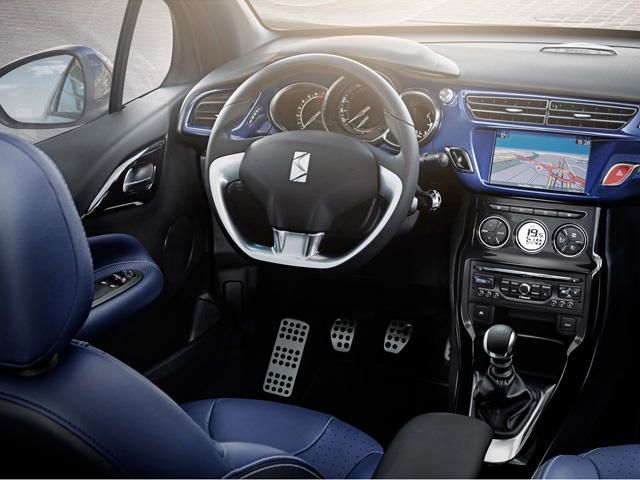
The scale of automotive luxury used to be fairly straight-forward: the bigger the car, the more luxurious. But these days customers demand premium amenities and accoutrements in smaller cars that they drive through crowded city streets and without an enormous gas bill. The emergence of luxury hybrids has been encouraged by exactly that market, but so has another category of automobile: luxury city cars. While most forms of downscaled urban transportation are decidedly Spartan, here are five that take the tiny hatchback in a new direction.
Perhaps the most obvious example is the Aston Martin Cygnet. The Brits essentially took a Toyota/Scion iQ, gave it some new bodywork and outfitted the interior to Aston Martin standards. The result has left enthusiasts up in arms as to how the vaunted winged badge has been applied to such an uncharacteristic car if the brand, but has given some owners exactly the kind of car they need for when they can't drive their DB9 through the center of London for fear of congestion charges, high fuel prices and packed streets. What it's really missing is an engine upgrade, though, because the 98hp 1.3-liter inline four is a far cry from Aston's signature 6.0-liter V12.
Seeing what Aston could do with the Cygnet, some bean-counters at BMW put their two British brands to work on a joint project. The result is the Mini Inspired by Goodwood. Craftsmen at Rolls-Royce have worked their magic on the interior of a Mini Cooper S, swathing it in cornsilk leather, walnut burr trim, thick carpeting and everything else you could expect in a Ghost or a Phantom, only in a smaller package. The body has been repainted in Rolls-Royce colors (Diamond Black or Reef Blue), and 17" alloys fitted. The biggest difference, though, is that you won't need to bother the chauffeur to enjoy Rolls-Royce levels of luxury.
At one end of the Italian automotive industry you'll find the Fiat brand and its Abarth performance division. At the other you'll find the likes of Maserati and Ferrari. But even that can be bridged with something like the Abarth 695. In 2009 Abarth transformed the Fiat 500 into the 695 Tributo Ferrari with a 180hp 1.4-liter turbo four, 17-inch alloys, Brembo brakes and a Ferrari red paint job with silver stripes like the 430 Scuderia. Once those were all sold out, Abarth applied a similar treatment to the Tributo Maserati, this time a bit more subdued with deep burgundy paint, Poltrona Frau leather and the 500C's convertible roof.
When Audi set out to take on the premium supermini segment, it started out with the VW Polo, but the transformation into the Audi A1 was far more comprehensive than that applied to the Cygnet, Goodwood or 695. Although it's based on the same platform as the Polo, the A1 is a distinct model in its own right. It also takes a decidedly un-retro approach, with a contrasting roof frame reminiscent of the R8's side blade and a taut, modern form. The A1 offers an array of engines ranging from 1.2 liters to 2.0 and from 85 horsepower all the way up 252 in the Clubsport Quattro model, a limited-production hot hatch that outperformed the Nissan GT-R on a wet test track.
Citroen didn't go quite as far transforming the budget-oriented C3 hatchback into the DS3, but has distinguished its premium supermini just the same. Targeting the likes of the aforementioned Mini and Audi, the DS3 served as the launch model for Citroen's reborn premium sub-brand, later leading to the DS4 and DS5 crossovers. Where the Mini and 500 went retro, the DS3 is decidedly contemporary, and while not nearly as luxurious as the Cygnet, Goodwood or Tributo, the DS3 is a more upscale affair than the C3 on which it is based. Engines range from 95 hp up to 205 in the DS3 Racing. Sebastien Loeb drove the rally version to his final two titles in the World Rally Championship.



